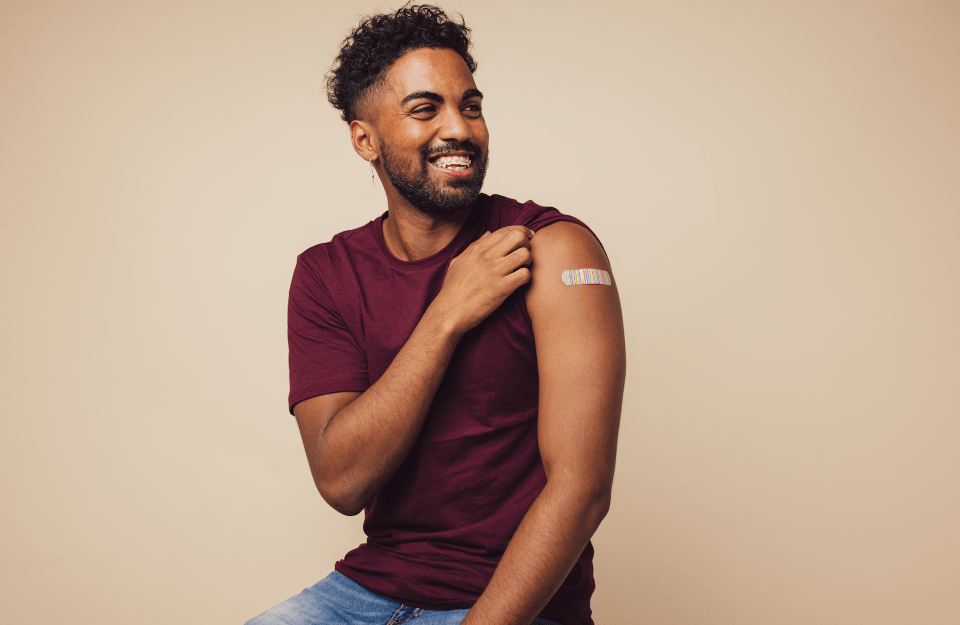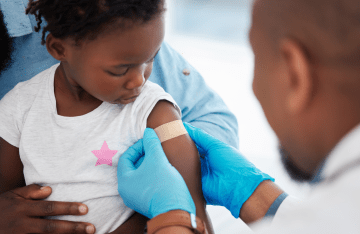Penn Researchers Receive NIH Grant to ID Barriers to Accepting a Future HIV Vaccine
A team led by Professor Dolores Albarracín received a $4 million grant to identify ways to increase vaccination rates.

A team of researchers from the University of Pennsylvania’s Schools of Medicine, Nursing, and Communication has received a $4 million, five-year grant from the National Institutes of Health (NIH) to identify ways to increase vaccination rates. Their work will focus on the drivers of acceptance of an anticipated HIV vaccine.
The work is being led by Dolores Albarracín, the project director and Alexandra Heyman Nash University Professor, and director of the Annenberg Public Policy Center’s (APPC) Science of Science Communication division.
Her co-investigators are Ian Frank, a professor at the Perelman School of Medicine and director of Anti-Retroviral Clinical Research within the Infectious Diseases Division and a member of the NIH HIV Vaccine Trials Network; José A. Bauermeister, professor of Family and Community Health at the School of Nursing, a leading expert in sexual minority health, and an APPC distinguished research fellow; and Bita Fayaz-Farkhad, Man-pui Sally Chan, Haesung Annie Jung, and Sicong Liu, researchers at the Annenberg School for Communication. Annenberg Senior Research Coordinator Christopher Quasti will also be part of the research team.
“Although a common theory attributes the reluctance to vaccinate to misinformation, vaccines are created and rolled out within a complex social context that includes intertwined norms, public communications, and public health policies,” Albarracín noted. “Understanding the causal pathways to vaccination requires the kind of cross-disciplinary effort this grant will facilitate.”
Acceptance of vaccines — and a future HIV vaccine
The researchers will study how health and social policies and norms affect acceptance of vaccines, in general, and a future HIV vaccine, in particular. Regarding the future of an HIV vaccine, Frank said: “After years of study, we finally understand the type of vaccine-induced immune response that will be protective and are now testing several HIV vaccine concepts that, we hope, will stimulate this response. Once we have shown an effective vaccine, we must ensure the community at risk for HIV infection will get vaccinated.”
This project will investigate how to increase the probability of vaccination against HIV if the FDA approves an HIV vaccine.
The research will encompass two extensive studies. After gathering a national sample of men who have sex with men (MSM), a group that has historically borne the brunt of the HIV burden, the researchers will ask them to complete surveys regarding norms, policies, and attitudes about vaccinations over four years.
During the same period, the team will conduct a quantitative study of state and county-level policies that concern the immunizations in the Center for Disease Control’s (CDC) vaccination schedule (e.g., the measles, mumps, and rubella (MMR) vaccine, influenza vaccines, etc.). At the same time, the researchers will assess health-related concerns of the lesbian, gay, bisexual, transgender, and queer (LGBTQ+) community, such as the ability to receive LGBTQ+ friendly care and policies that might affect healthcare-seeking and vaccination. They will also record state and county-level policy changes made throughout the study, including vaccine funding, accessibility, and non-medical exemptions.
Evaluating attitudes and norms
The research team also will track social media user posts and content regarding vaccines and immunization policies to gauge attitudes and norms about vaccine mandates and access to vaccination sites. Combining survey data, information about state and county-level policies, and social media analyses will make it possible for the team to isolate societal trends about vaccines, health, and LGBTQ+ issues in different regions across the United States in a detailed way.
In addition, the researchers will conduct an experiment to identify factors that predict public acceptance of future vaccines in general and, specifically, the willingness of MSM to take potential HIV vaccines with different side effect profiles and required doses.
Collecting information across five years will allow researchers to separate the effects of specific policies on MSM from factors that may correlate with those policies.
“Correlating policies with public opinion and behaviors without looking at them across time is insufficient to justify causal inferences,” noted Albarracín. “Through long-term observation and controlled experiments, we will determine, for example, whether the norms in the population affect the policies or whether the policies affect the norms. These efforts will allow us to determine the types of communications and policies that are most effective for different regions of the country and different vaccines.”
Media Contact: Michael Rozansky, (215) 746-0202, michael.rozansky@appc.upenn.edu



